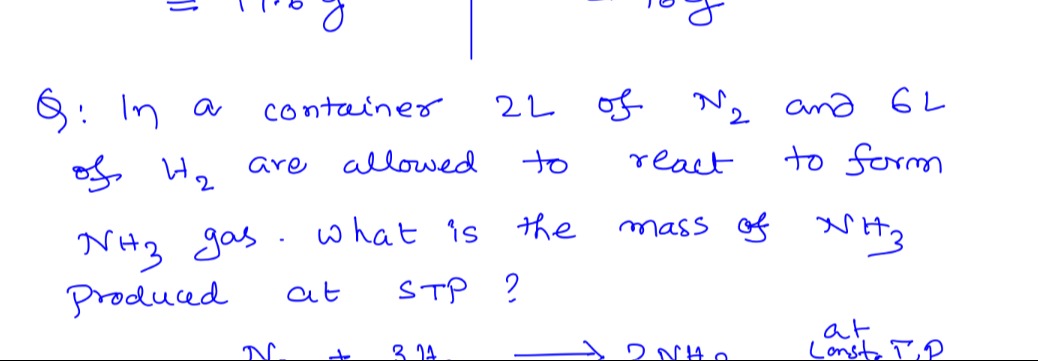Question
Question: In a container 2L of $N_2$ and 6L of $H_2$ are allowed to react to form $NH_3$ gas. what is the mass...
In a container 2L of N2 and 6L of H2 are allowed to react to form NH3 gas. what is the mass of NH3 Produced at STP?

2885 g
Solution
The balanced chemical equation for the formation of ammonia is N2(g)+3H2(g)→2NH3(g). According to Avogadro's Law, at constant temperature and pressure, the volume of gases is directly proportional to the number of moles. Thus, the volume ratio of reacting gases is equal to their mole ratio. The stoichiometric volume ratio is V(N2):V(H2):V(NH3)=1:3:2. Given volumes are V(N2)=2 L and V(H2)=6 L. The ratio of given volumes is 2:6, which simplifies to 1:3. This matches the stoichiometric ratio, meaning both reactants are present in stoichiometric amounts and will be completely consumed. From the stoichiometry, 1 volume of N2 produces 2 volumes of NH3. Therefore, 2 L of N2 will produce 2×2=4 L of NH3. At Standard Temperature and Pressure (STP), the molar volume of an ideal gas is 22.4 L/mol. The number of moles of NH3 produced is Molar volume at STPVolume of NH3=22.4 L/mol4 L. The molar mass of NH3 is 14(for N)+3×1(for H)=17 g/mol. The mass of NH3 produced is: Mass of NH3=Moles of NH3×Molar mass of NH3 Mass of NH3=(22.44) mol×17 g/mol Mass of NH3=22440×17 g Mass of NH3=285×17 g Mass of NH3=2885 g
